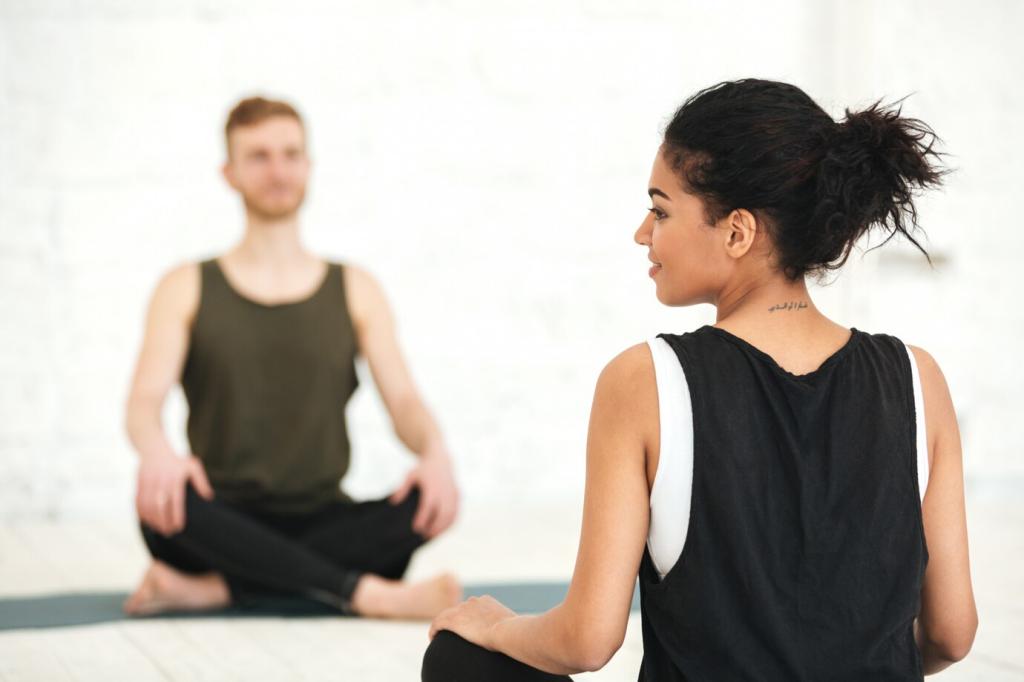Meditation for Stress Reduction in Sports: Play Calm, Perform Bold
Why Meditation Matters When the Game Tightens
From Fight-or-Flight to Flow
Under stress, cortisol spikes and reaction speeds up, but decision quality often drops. Meditation rebalances the sympathetic and parasympathetic systems, improving heart rate variability and composure. Share how your breathing changes under pressure, and notice what steadies first.
Attention Is a Muscle
Mindfulness strengthens selective attention and reduces distractibility. In sport, that means clearer reads, smarter pacing, and quicker recoveries after mistakes. Try a sixty-second focus drill today and tell us what details you suddenly noticed on the field.
A Sprinter’s Turning Point
After false-start anxiety cost a final, a sprinter adopted a three-breath ritual at the blocks. Within weeks, starts felt calmer, and her reaction time stabilized. What might your three-breath reset look like? Describe it and inspire another athlete.


Box Breathing Between Plays
Inhale four, hold four, exhale four, hold four. Sync the count with routine actions like adjusting a glove. This anchors presence without signaling nerves. Which moment fits your box breath? Share your timing trick with the team.

Reset at the Line, Baseline, or Blocks
Pick a fixed point, soften your jaw, exhale long, and release the last play. A quick visual focus narrows noise and primes execution. Tell us your favorite reset spot and the words you repeat to return to now.


Post-Game Recovery: Unwind, Learn, Sleep
Use long exhales or gentle humming to stimulate vagal tone and signal safety. Five minutes can dissolve the adrenaline echo. Try tonight, then share how quickly your breath and mood settled after competition.
Post-Game Recovery: Unwind, Learn, Sleep
Journal three columns: facts, feelings, and focus for next time. Meditation helps separate identity from outcome, turning mistakes into data. Post one actionable learning from your last game; your insight might unlock someone else’s breakthrough.
Before tactics, dim chatter and breathe together. This tiny ritual builds collective composure and trust. Captains, propose it at your next meeting and report back on how the opening minutes felt compared with usual noise.
Team and Coaching Integration
Swap vague “relax” for specific actions: “exhale longer,” “soften jaw,” “eyes on the seam.” Athletes execute behaviors, not abstractions. Coaches, share your best cue below so others can borrow and refine it this week.
Team and Coaching Integration
Track What Changes
Use a wearable to log morning heart rate variability and resting heart rate. Look for trends, not perfection. Notice improvements after consistent practice. If you track already, post a screenshot and note your biggest shift.
Count fewer unforced errors, steadier free-throw rates under pressure, or smarter timeout use. Connect calm moments to outcomes. Share one metric you’ll monitor this month and how you’ll pair it with a meditation habit.
Rate your pre-game calm, in-game reset speed, and post-game rumination on a one-to-ten scale. Compare across weeks. Comment your numbers today and revisit after fourteen days of consistent breathing practice.



Common Roadblocks, Real Fixes
Try walking meditation: breathe in for four steps, out for six, noticing footfalls and arm swing. Motion can focus scattered thoughts. What route suits you best? Share it so others can copy your setup.
Common Roadblocks, Real Fixes
Pair breaths with lacing shoes, foam rolling, or ice bath entries. Ten focused inhales still count. Micro-doses add up fast. Tell us your favorite stack so busy teammates can borrow your routine immediately.
